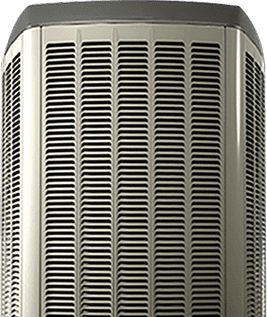Faulty Furnace Thermostat Symptoms

Faulty Furnace Thermostat Symptoms
The reliability of your furnace becomes paramount to maintaining a warm and cozy home during the wintertime. While the furnace itself plays a crucial role in heating your living space, the thermostat serves as the control center by regulating the indoor temperature and ensuring your comfort. So, what happens when your thermostat begins to malfunction? How can you tell your thermostat is malfunctioning in the first place? Join the team from Limcan Certified as we break down faulty furnace thermostat symptoms so you can have a better idea about what to look for around your home.
What is a furnace thermostat?
A thermostat is an instrument that modifies the temperature in a living area by regulating how a heating system works. It acts as a connection between the heating system and the homeowners, enabling them to program and modify the temperature they want indoors. The interaction between the thermostat and the furnace begins the heating process and ends it once the desired temperature has been achieved.
Ultimately, a furnace thermostat is essential for both the comfort levels in your home and your monthly energy savings. It silently operates precisely, regulating the furnace’s operating hours and temperature settings year-round.
How do I know if my furnace thermostat is not working?
A malfunctioning furnace thermostat can lead to temperature inconsistencies and overall discomfort. Here are common signs that can indicate your thermostat is not working as it should:
· Incorrect temperature measurements: If the thermostat’s displayed temperature differs from the actual temperature in your house, there may be a problem.
· Continuously operating furnace: If your thermostat fails to instruct the furnace to shut off even after it reaches the desired temperature, your heating system may operate nonstop. This may result in discomfort and energy waste.
· Unresponsive controls: If your thermostat’s dials, buttons, or touchscreen are not working correctly, there might be an internal system problem.
· Lack of heat or inadequate heating: The thermostat may not be properly connecting with the furnace if your home stays cold even after you adjust the thermostat settings on it to a higher setting or if the heating is not sufficient.
· Bad thermostat wiring: Check for loose connections, deterioration, or other damage on the thermostat wiring. Inadequate or broken wiring may cause communication issues between the heater and thermostat.
· Age and wear: Thermostats may deteriorate or lose accuracy with time. Your thermostat can be more prone to problems if it is older and has been in use for a long time.
How do I know if I need a new thermostat?
A number of elements need to be considered when deciding whether or not you need a new thermostat. Here’s how you can tell when it’s time for an upgrade:
· Minimal or no programmable features: It’s common for modern thermostats to have programmable capabilities that let you preset various temperatures at different times of the day. Switching to a a programmable thermostats, also known as a smart thermostat can improve energy efficiency and convenience if your existing thermostat isn’t programmable.
· Regular repairs: It can be a sign of a responsiveness problem or failing thermostat if you find yourself constantly adjusting the thermostat to keep it at a comfortable temperature. This can be remedied with a new thermostat that has precise temperature control.
· Energy saving goals: Getting a smart or programmable thermostat will help you reduce your energy use and electricity costs. These thermostats have features like occupant sensing for better efficiency, and you can set programs and change settings remotely. If you want to increase your energy efficiency ratings, think about an upgrade.
· Furnace installation: If you’re upgrading to a new furnace in your home, you may want to change the thermostat along with it to ensure optimal performance and energy savings.
How do I test a furnace thermostat?
Testing a furnace thermostat involves a few simple steps to ensure it is functioning accurately and communicating effectively with your heating system. Here’s a step-by-step to help you
1. Check the power supply: To inspect for wiring problems, turn off the furnace’s electricity by flipping the circuit breaker. Examine the wiring after removing the thermostat cover. Ensure that each wire is firmly attached to the appropriate terminal. You may also need to change out the battery, which will also be under the thermostat replacement cover.
2. Put the thermostat on “Heat”: Increase the temperature on the thermostat to a level that is greater than the ambient temperature. This will activate the heating system.
3. Examine the thermostat display: Look over the thermostat display. A thermostat problem might exist if the display is blank or indicates the wrong temperature.
4. Check the airflow: To check if warm air is coming out from a vent, place your palm in front of it. After a few minutes, if the warm air is gone, there may be an issue with the furnace, the thermostat, or both.
It’s best to speak with a qualified HVAC specialist for additional evaluation and repairs if you feel uncomfortable performing any of these actions or if there are problems throughout the test. Testing a thermostat is a simple inspection that might not catch every possible problem. A more precise diagnosis could call for a thorough assessment by a trained technician.
Get Thermostat Repair and Replacement Services
Is your thermostat malfunctioning? If so, we suggest reaching out to the team from Limcan Certified Heating and Air Conditioning for assistance. Our certified HVAC technicians are available for repair and maintenance services 24/7/365 days a year, including after-hours, weekends, and holidays, at no extra cost! In emergency situations, we also offer same-day repairs.
Limcan Certified Heating and Air Conditioning proudly operates throughout Oshawa, Ajax, Clarington, Kawartha, Pickering, Port Perry, Whitby, Bowmanville, Durham Region, Peterborough, Port Hope, and Uxbridge.
Book your repair appointment with our team over the phone or use our online booking form.
